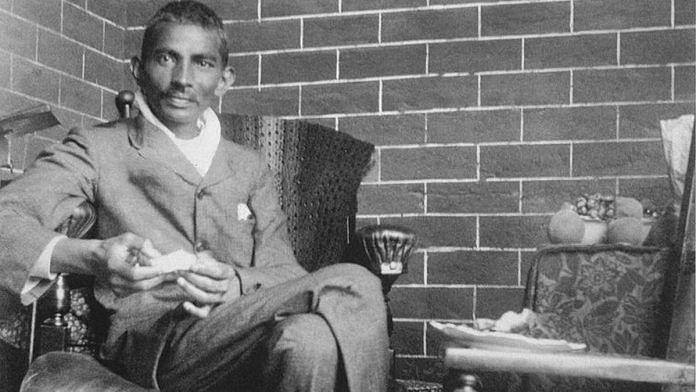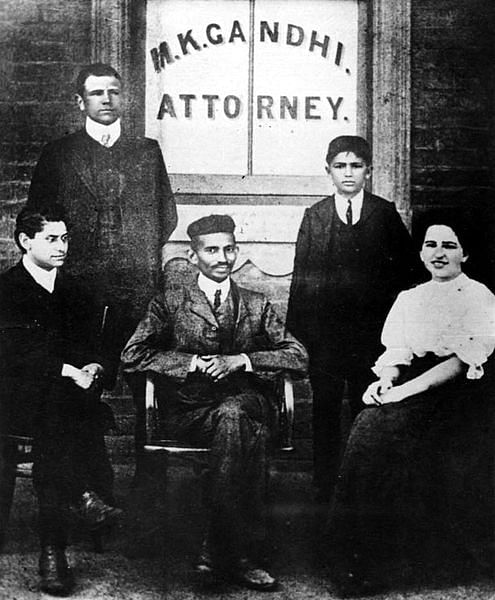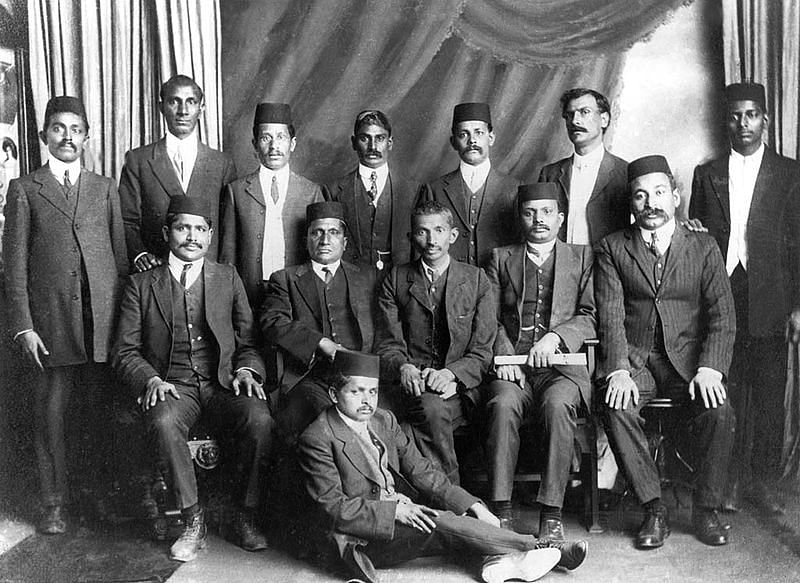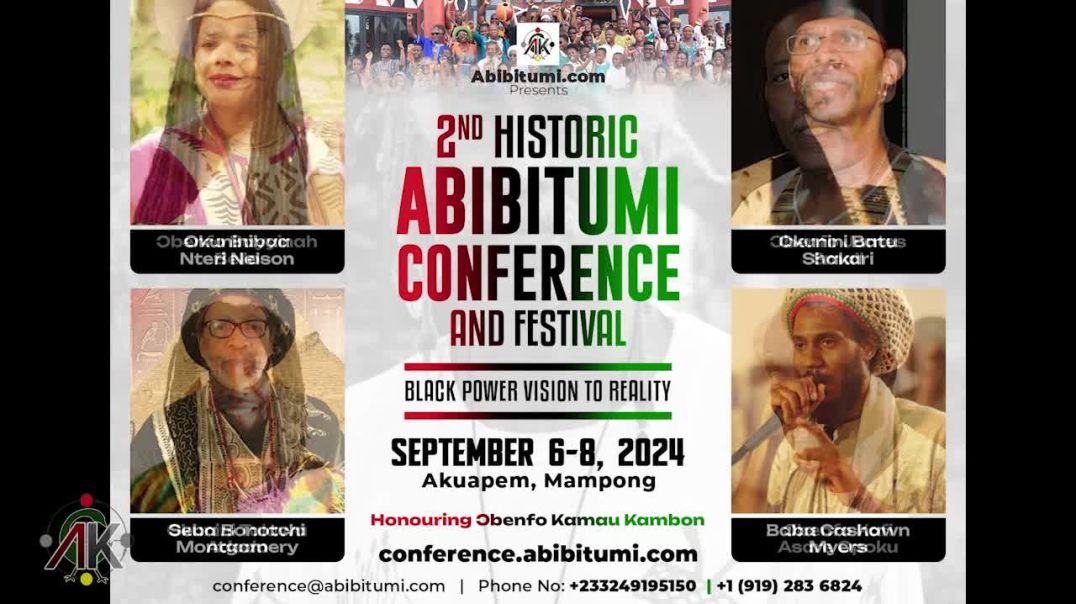Ram Guha is wrong. Gandhi went from a racist young man to a racist middle-aged man

There is a reason why Ghanaians protested the Gandhi statue and said #GandhiMustFall.
There is enough textual evidence to back the scholarly claim that Mohandas Karamchand Gandhi was racist. According to Indian political historian Ramachandra Guha: “By the time he was in his mid-30s, Gandhi no longer spoke of Africans as inferior to Indians.”
To debunk this demonstrably false assertion by Guha, we will take a brief look at Gandhi’s writings from his mid-to-late-30s and early-to-mid-40s up to the time of his departure from uMzantsi Afrika (South Africa), and see if they qualify him to be called an anti-Afrikan/anti-Black racist.
Many people across the world who previously admired Gandhi and hailed him as a ‘Mahatma’ (great soul) may be experiencing what is called ‘cognitive dissonance’ (the mental conflict that occurs when beliefs or assumptions are contradicted by new information). This psychological state has been induced by what I call ‘impropaGandhi’ (improper propaganda about Gandhi).
“Those who suffer from cognitive dissonance reject, explain away, or avoid new information; persuade themselves that no conflict really exists; reconcile the differences; or resort to any other defensive means of preserving stability or order in their conceptions of the world and of themselves.” If this describes you, keep reading.
From Guha’s article, we can ascertain at least one of three possibilities. That Guha:
- does not know much about Mohandas Karamchand Gandhi.
- is intentionally lying about Mohandas Karamchand Gandhi (in true Gandhian fashion).
- is unable to do simple arithmetic.
Mohandas Karamchand Gandhi was born on 2 October, 1869.
In Gandhi’s autobiography, the reader is conned via impropaGandhi into believing that Gandhi had a life-changing epiphany and transformation in 1906:
“[…] Thus brahmacharya which I had been observing willynilly since 1900, was sealed with a vow in the middle of 1906.”
(Satyagraha in South Africa: Navajivan Publishing House Ahmedabad, 1972 reprint. By M. Gandhi & V. G. Desai. 1927, pp. 90-91.)

With this supposed epiphany in mind, let’s take a quick look at a sample of Gandhi’s views on Afrikan-Black people immediately before that vow at the age of 36:
22 May, 1906
“It was a gross injustice to seek to place Indians in the same class as the Kaffirs.”
(Vol. V. The Collected Works of Mahatma Gandhi (Electronic Book) (Vol. 98 volumes). New Delhi: Publications Division Government of India, p. 226)
‘Kaffir’ is an extremely derogatory term used to describe the indigenous Afrikan/Black people of uMzantsi Afrika (South Africa), and Gandhi was aware that the term was as derogatory as the term ‘Coolie’, which was applied to Indians and to which he took much offence (See Willem Adolf Joubert and T. Johan Scott (1981). The Law of South Africa, vol. 6. Cape Town Berea: Butterworths, pp. 251–254.).
26 May, 1906
“Thanks to the Court’s decision, only clean Indians or Coloured people other than Kaffirs can now travel by the trams.”
(CWMG. Vol. V, p. 235)
Now let’s take a brief look at Gandhi’s views on Black people after his supposed transformation, which ostensibly occurred in the middle of 1906:
6 November, 1906
“Boer leaders […] should not consider Indians as being on the same level as Kaffirs.”
(CWMG, Vol. VI, p. 112)
16 November, 1906
“[T]he Boer mind […] refused to recognize the evident and sharp distinctions that undoubtedly exist between British Indians and the Kaffir races in South Africa.”
(CWMG. Vol. VI, p. 95)
12 July, 1907
“If registration is made compulsory, there will be no difference between Indians and Kaffirs…”
(CWMG. Vol. VII, p. 395)
12 December, 1907
“The Indian of the Transvaal […] is indiscriminately dubbed ‘coolie.’ One hears even in official circles such expressions as ‘coolie lawyer,’ ‘coolie doctor,’ ‘coolie merchant.’ His women are ‘coolie Marys. […]
He is even denied the not always obvious privilege of riding in the same municipal tramcars and Government railway carriages as his white fellow-colonists. His children are afforded no facilities for education except they attend the schools set apart for Kaffirs.”
(CWMG. Vol. VII, pp. 445-446) (emphasis added)
We cannot but point out the double-standard in Gandhi’s laments at being called a coolie, while in the next breath he descends to calling Afrikan-Black people “Kaffirs”. This is when Gandhi was 38-years-old.
12 December, 1907
“Compulsory registration is recognised as signifying nothing less than the reduction of British Indians to the status of the Kaffir.”
(CWMG. Vol. VII, p. 447)
July 3, 1907
“Kaffirs are as a rule uncivilised – the convicts even more so. They are troublesome, very dirty and live almost like animals. […] The reader can easily imagine the plight of the poor Indian thrown into such company!”
(CWMG Vol. VIII, p. 199)
2 February, 1908
“The British rulers take us to be so lowly and ignorant that they assume that, like the Kaffirs who can be pleased with toys and pins, we can also be fobbed off with trinkets.”
(CWMG. Vol. VIII, p. 167)
7 March, 1908
“Many of the Native prisoners are only one degree removed from the animal and often created rows and fought among themselves in their cells.”
(CWMG. Vol. VIII, p. 183)
3 July, 1908
“We were then marched off to a prison intended for Kaffirs. There, our garments were stamped with the letter ‘N,’ which meant that we were being classed with the Natives. We were all prepared for hardships, but not quite for this experience. We could understand not being classed with the whites, but to be placed on the same level with the Natives seemed too much to put up with.
(CWMG. Vol. VIII, p. 198)
21 March, 1908
“There is nothing for it but to let ourselves be classed with the Kaffirs and starve.”
(CWMG. Vol. VIII, pp. 218-19)
16 January, 1909
“I observed with regret that some Indians were happy to sleep in the same room as the Kaffirs […] We may entertain no aversion to Kaffirs, but we cannot ignore the fact that there is no common ground between them and us in the daily affairs of life.”
(CWMG. Vol. IX, p. 257)
16 January, 1909
“I have, though, resolved in my mind on an agitation to ensure that Indian prisoners are not lodged with Kaffirs or others.”
(CWMG. Vol. IX, p. 257)
The next quote is a brief look at Gandhi’s role in supporting a multi-level caste-like strain of Apartheid in the prisons in South Africa. He was 39 when he wrote this:
23 January, 1909
“[T]here was urgent need for separate lavatories for Indians. I also told him that Indian prisoners should never be lodged with Kaffirs. The Governor immediately issued an order for a lavatory for Indians to be sent on from the Central Gaol.”
(CWMG. Vol. IX, p. 270)
30 January, 1909
“First, why should we bear such hardships, submit ourselves, for instance, to the restrictions of gaol life, wear coarse and ungainly dress, eat food which is hardly food, starve ourselves, suffer being kicked by the warder, live among the Kaffirs […] Better die than suffer this…”
(CWMG. Vol. IX, p. 292) (emphasis added)
Again, we see the blatant “Coolie/Kaffir” hypocrisy in the following quote by Gandhi:
19 July, 1909
“We were locked up with the Kaffirs. There was not a single European officer who described us as Indians. We were called “sammies” or “coolies”.
(CWMG. Vol. X, p. 34) (emphasis added)
8 October, 1909
“We do not get there the food that we are used to, and are classified with the Kaffirs.”
(CWMG. Vol. X, p. 158)
It should be noted at this point that Gandhi lived till 78 and at the time of the preceding quote, he was 40, making him middle-aged (and certainly not in his mid-30s as asserted by Guha). Those who suffer from impropaGandhi-induced cognitive dissonance, who say he was only an anti-Black/anti-Afrikan racist when he was “young”, are being quite disingenuous. Let’s continue:
2 December, 1910
“Some Indians do have contacts with Kaffir women. I think such contacts are fraught with grave danger. Indians would do well to avoid them altogether.”
(CWMG. Vol. X, p. 414)
10 March, 1911
“If the Regulations provide for Kaffir Police, we can fight the Regulations.”
(CWMG. Vol. XI, p. 266)
25 October, 1913
“I saw it reported that we might even ask the Kaffirs to strike. But such is not our intention at all.”
(CWMG. Vol XIII, p. 385)
This quote was the year before Gandhi left uMzantsi Afrika (South Africa) for India, where he turned his attention to robbing the Dalits – the Black untouchables of India – of the double-vote and special electorates. Why does Ramachandra Guha fail to mention all this? Was this out of ignorance or malevolence?
In our chapter entitled “The Pro-Indo-Aryan, anti-Black M.K. Gandhi and Ghana’s #Gandhi Must Fall Movement”, in the book Rhodes Must Fall (Oxford), we focus on the consistency of Gandhi’s pro-Indo-Aryan and Anti-Afrikan/Anti-Black actions throughout his life in uMzantsi Afrika (South Africa). His subsequent disagreements in India with Babasaheb Ambedkar on the demand for the rights of the Dalits are a continuation of his earlier anti-Black racist life.

Also, it should be noted that racism – like Varnasrama Dharma “caste-ism” – is systemic, and as such, the concrete actions that perpetuate these systems should not be reduced to the idea that it simply consists of saying mean things. From Gandhi’s role in instituting caste-like apartheid and segregation at the Durban post office, telegraph office, and in the jails, to his agitating for military training and firearms to use against the AmaZulu alongside his ‘white fellow-colonists’ at the time of the Bambatha Rebellion (which he later lied about in his autobiography), to the coercion-induced Poona Pact disenfranchising the Dalits, Gandhi’s Pro-Indo-Aryan, Anti-Black racist actions are clear-cut, straightforward and inexcusable.
Further, and more significantly, Gandhi pales (no pun intended) in comparison to the Afrikan/Black heroes and heroines that we could, would, and should choose for ourselves – if we even had the chance to learn about them – based on the principle of self-determination as opposed to external imposition via coercion.
Additionally, if this is to be a serious conversation, it would be useful if those who suffer from impropaGandhi-induced cognitive dissonance cease and desist from dragging out that tired list of Afrikans/Blacks who Gandhi successfully duped with impropaGandhi simply because they did not have the opportunity to research and read his Collected Works.
Finally, I would also like to express solidarity with the Dalits – the Black untouchables of India – who have suffered under the pale white yoke of Indo-Aryan oppression for centuries. Indeed, the struggle for Black dignity, self-respect and self-determination continues worldwide. This is why the faculty in the University of Ghana protested the Gandhi statue with the hashtag #GandhiMustFall.
The author is Research Coordinator, Language, Literature and Drama Section, Institute of African Studies, University of Ghana. He was also a part of the #GandhiMustFall protest.









